Do you search for a plant that is healthy for you? Ginger Plant is for you. Ginger is an herbaceous lasting having a place to family Zingiberaceae.
It is accepted to be local of south-eastern Asia. Ginger plants have the underground rhizome with numerous fragile scale clears out at the nodal locale. It is increased through rhizomes by cutting them into the directly measured pieces of almost 25-30 g.
Ginger is a flowering plant whose rhizome or ginger root is wide. Ginger was described by Discords and Pliny the Elder and introduced by the Mediterranean.
Leaves of ginger are basic, substitute, linear-lanceolate, sheathing at the base, sessile, acuminate at the pinnacle, globous, up to 15 cm. long.
The root of the Ginger plant can be expended new, powdered, dried as a zest in an oil frame.
What is a Ginger plant?
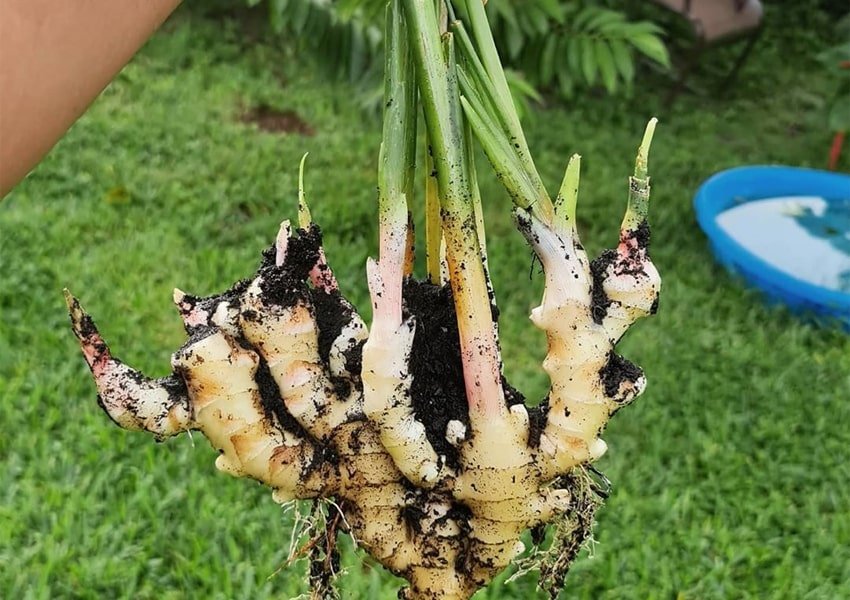 Ginger could be a blooming plant whose rhizome, ginger root or ginger, is broadly utilized as a spice and a society pharmaceutical. It could be a herbaceous perpetual which develops yearly pseudo stems (untrue stems made of the rolled bases of clears out) almost one-meter tall bearing contract leaf edges.
Ginger could be a blooming plant whose rhizome, ginger root or ginger, is broadly utilized as a spice and a society pharmaceutical. It could be a herbaceous perpetual which develops yearly pseudo stems (untrue stems made of the rolled bases of clears out) almost one-meter tall bearing contract leaf edges.
This plant is a hot, fragrant spice made from the root of a plant, which may be powdered for cooking, candied or preserved in syrup candied.
Origin (History) of Ginger plant.
The story of Ginger dates back 5000 a long time. Antiquated Chinese rationalist Confucius celebrated its mending powers, and to the Romans, it was a solid image of riches and richness.

Ginger root was found and developed in South Asia sometime recently being sent out to East Africa and the Caribbean. This plant perennial plant of the family “Zingiberaceae”.
Ginger first developed in the southern parts of China. From China, it spread to India. The name “Ginger” came a long way, but its root is in the Sanskrit word “Srngaveram,” which implies “horn body.” Whereas it develops, it has white and pink buds which sprout into yellow blossoms.
Scientific names
The scientific name of ginger is “Zingiber officinale”.
What we need before growing this plant?
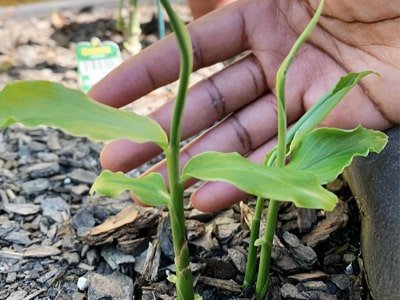
You will need to discover an area in full to halfway shade with wealthy, loamy, and well-draining soil for planting. This plant can be an understory plant that flourishes in hot and sticky jungle-like conditions with dappled sunlight.
The best soil for ginger is free, loamy, and wealthy in natural matter. Loamy soils permit water to deplete openly, which can offer assistance to avoid the rhizomes from getting waterlogged. Thick mulch can moreover give supplements, hold water, and offer assistance control weeds.
Tips for planting Ginger Plant?
Best time to grow Ginger plant?
Plant in early spring in case conceivable. If you live in a hotter climate, you’ll plant at any time. Cut off the fingers, making beyond any doubt each rhizome piece is 1 to 2 inches long with at slightest one bud.
Permit the pieces to dry for 24-48 hours sometime recently planting, as this makes a difference to control for conceivable root spoil.
Where to plant Ginger plant?
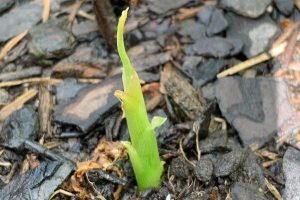 You will try to discover an area that’s in full to fractional shade with wealthy, loamy, and well-draining soil for planting.
You will try to discover an area that’s in full to fractional shade with wealthy, loamy, and well-draining soil for planting.
Usually, an understory plant flourishes in hot and sticky jungle-like conditions with dappled sunlight. Ginger can be developed straightforwardly within the ground or in pots. But on the ground, it is developed most.
If you want to grow the Ginger in pots, choose a pot that is at least 12 inches (30cm) deep. A plastic pot is best, as long as you poke plenty of drainage holes in the base.
Choose the right soil.
The right soil for Ginger is rich in organic matter, loamy, and loose. Loamy soil is allowed to water drains freely, which helps to prevent the rhizomes from becoming waterlogged. Thick mulch can also provide water, nutrients and help control weeds.
How deep to plant?
Plant the rhizomes 6 to 8 inches separated, 2 to 4 inches profound, and the development buds indicating upward. They can be planted in entirety or in littler pieces with a few developing buds each. Ginger plants will develop to around 2 to 3 feet tall.
Sunlight need for Ginger Plant
Ginger flourishes best in warm, sticky climates. Select a location that gives a bounty of light, counting 2 to 5 hours of direct sun rays.
How much space needed to grow Ginger Plant?
Ginger plant need does not need more space to grow. Ginger Plant the rhizomes 6 to 8 inches apart, 2 to 4 inches deep, and the growth buds pointing upward. They were planted whole or in smaller pieces with a couple of growing buds each. Ginger plants will be developed about 2 to 3 feet tall.
Where does Ginger Plant grow?
Generally, Ginger is created in nearly 40 nations worldwide. Most of the worldwide generation of Ginger is gathered in India, taken after by Nigeria, China, Indonesia and Nepal. Thailand, Cameroon, Bangladesh, Japan and Mali total the best 10.
How much water does Ginger plant need?
Ginger needs a parcel of dampness whereas effectively developing. The soil ought to never dry out. Do not overwater, even though, since the water that channels absent will take supplements with it.
Ginger plant growing tips

Begin in early spring. Ginger could be a tropical plant that does not survive ice. Plant after the final spring ice or at the beginning of the damp season if you live within the tropics.
Growing Ginger Root Is Not That Hard
If you live in a climate with a brief, developing season, you’ll develop the plant indoors. Choose ginger roots (actually rhizomes) that are stout and free of wrinkles, with unmistakable eyes (little focuses) after the “fingers.” Eyes that have begun to turn green are perfect but not required.
Buy natural ginger on the off chance that you’ll be able. Non-organic ginger may have been treated with a development inhibitor.
What Ginger Plants Like And Dislike
A few nursery workers discover that dousing in warm water overnight will offer assistance fortify repressed plants. If you’d like to develop more than one plant, cut the ginger with a sanitized cutting or shears.
Any piece at the slightest 1 inch (2.5 cm) wide with one or more eyes can develop into a partitioned plant. After cutting, take off the pieces in a dry area for a couple of. Days to permit them to recuperate. They will shape a defensive callus over the cut surface.
Each piece of ginger needs 8 inches (20 cm) of space. Utilize bigger pieces on the off chance that you would like to spare space. A piece with three or more eyes is more like to grow.
What type of soil suitable for Ginger plant
Ginger flourishes on high-quality, well-draining soil. Blending plant soil with an equal amount of well-rotted compost ought to do the work.
On the off chance that your soil is destitute quality or overwhelming in clay, purchase rich preparing soil instead.
You will transplant the ginger to the soil once it clears out and roots shape, which can be traumatic for the plant.
The perfect temperature for growing ginger is 70 degrees Fahrenheit, so you’ll utilize a warm tangle or another warm source to keep the soil a the correct temperature.
Like most cultivated plants, ginger inclines toward gently acidic soils. If the soil in your range is soluble, alter it to between 6.1 and 6.5 pH. Ginger inclines toward fractional shade or zones with the morning sun as it were, absent from huge roots.
Ginger can develop in full shade within the tropics, but these areas may be cool at other scopes. Attempt to plant the ginger at a put that gets two to five hours of coordinated daylight per day. Keep the soil soggy. Water delicately right after planting.
Check the soil every day and water fair sometime recently it dries out totally. Soaked soil will rapidly decay your plants, so diminish watering or make strides waste on the off chance that water does not deplete quickly.
How to care Ginger plant?

Watering
Check the soil every day and water fair sometime recently it dries out totally. Soaked soil will rapidly spoil your plants, decreasing watering or progress waste in case water does not deplete rapidly.
Observe for germination. Ginger develops gradually, particularly in the exterior of the tropics. In common, the Ginger plant requires 1-time water per week.
Amount of sunlight
Ginger flourishes best in warm, muggy climates. Select a location that gives a bounty of light, counting 2 to 5 hours of coordinate daylight. This plant requires full sunlight.
How to prune
Get a handle on the base of the stem with the dead or passing on bloom. Utilize pruning shears to cut the stem off close to the base of the plant.
Ginger plant stems as it created one bloom sometime recently passing on, so pruning these off makes the plant more appealing. Prune these stems persistently all through the year each time a sprout blurs.
Add mulch
Mulching is a vital component within the administration hones of ginger. The mulching areas with green fertilizer is the foremost important operations carried out for a fruitful ginger generation. Within the dry months, it moderates the dampness within the soil and improves soil temperature for legitimate germination of the rhizome.
Apply fertilizer on the Ginger plant
The suggested fertilizer measurements for ginger are 75 kg N, 50 kg P2O5 and 50 kg K2O per ha. The fertilizers are to be connected in part dosages. The beds are to be earthed up after each beat dressing with the fertilizers.
Pests and Disease
Bacterial Shrink: Caused by a microbe that enters the vascular tissue of ginger plants and increases until the shoots and takes off are incapable of producing enough water and nutrients to outlive, bacterial shrink is clear signs of water stress despite satisfactory watering and takes off yellowing from foot to top.
Fusarium Yellows – Fusarium may be an organism that attacks ginger much the same way that the bacterial colonies of bacterial shrink do.
But because the organism doesn’t develop as rapidly, it takes longer for the ginger plant to shrink and start to decay. You’ll instep discover yellow and hindered shoots scattered among something else solid plants.
Root-knot Nematode – Root-knot nematode may be recognizable to vegetable producers, but it carries on somewhat in an unexpected way in ginger. Rather than making a organize of knobby developments, it gives rhizomes a knotty, plugged, or broken appearance.
Winter care
Gingers are tough and will develop year circular, even though they will go mostly dormant over the winter inside. And that’s a great thing. Keep the soil wet but not damp and check to ensure the rhizome is firm many times all through the winter.
Ginger Plant use as a medicine
Ginger is utilized for therapeutic purposes to remedy aggravation, torment and sickness. The utilize of ginger dates back to 3000, a long time of wealthy history. It has never changed in its therapeutic properties since time immemorial.
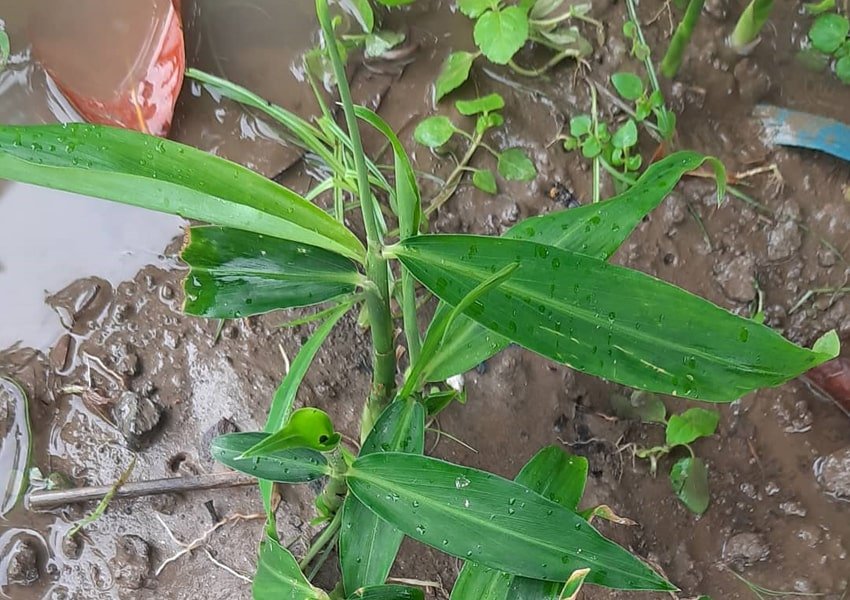
Brain Functionality
Moreover, the anti-inflammatory properties accessible in ginger can keep you cautious and make a difference in great brain usefulness. It fundamentally increments your nearness of intellect.
Anticipates Cancer
According to a ponder by the British Diary of Sustenance, analysts found that ginger was exceptionally compelling in blocking prostate cancer cells and their growth.
Good for Your Heart
Ginger is sweet for your heart such that it decreases cholesterol and brings down your chance of having any blood clots. Most critically, it controls blood sugar levels. Ginger can, in the future gotten to be an indispensably pharmaceutical for treating diabetes and heart infections.
Ginger Can Slaughter Awful Bacteria
All you wish to do is include ginger to your ordinary slim down, and you’ll witness the changes. Moreover, ginger can be devoured in crude frames as well as cooked shapes. A small bit of ginger tea can do the trick.
Anticipates Nausea
All you wish to do is to chew a few crude gingers or essentially taste a few hot containers of ginger tea, which will remedy your queasiness and diminish your risk of cancer. On the off chance that you’re enduring sickness due to motion affliction, at that point, ginger once more plays the trap. The finest portion almost ginger is that it is best to use indeed after you pregnant, which prevents nausea very well.
Ginger Secures DNA
Ginger secures your DNA from getting harmed and distorting the infant. Moreover, a few analysts conducted a think about covering 100 prolific men wherein they were given 500mg of ginger powder for a nonstop 3 months. This had come about within the increment of sperm quality.
Ginger Ensures the Liver
Ginger is said to secure you from hurtful chemicals that can harm your liver. It, too, decreases the dangers of your liver from maturing. There are overwhelming metal and drugs sedimented on your liver, and ginger is said to wash it absent.
Ginger Diminishes Cholesterol
If you need to decrease cholesterol at that point, you wish to consider including 3 grams of ginger powder included to your nourishment since cholesterol is harmful to your heart.
Ginger plant for Skin and Hair

Skin
Reduces White Spot
Ginger can diminish white scars, and all you wish to do is to fair put a chunk of ginger on the white scars for a least 15 minutes, which will do the work. Mending whiteheads normally is way better than going in for skin medications to make your skin show up indeed more awful.
Glowing Skin
Applying a small bit of ginger on your skin can revive your skin and make it shine. The same can be the case if you fair have a glass of ginger tea.
Anti-aging
Wrinkles are the primary sign of maturing, and a small bit of ginger tea each day can evacuate those wrinkles and avoid aging.
Skin Conditioning
Ginger makes your skin see the sound and relaxes it, hence making it see youthful and fresh.
Hair
Makes a difference in Hair Development
Ginger increments the blood circulation to the scalp of your hair, and this empowers hair growth.
Prevents Dandruff
Ginger comprises clean properties that offer assistance anticipate dandruff. Expending ginger makes a difference. You sweat, and after, you sweat from your hair. It produces characteristic oils that act as cleaning agents avoiding dandruff.
Treats Part Closes
Ginger has cancer prevention agents in it that can avoid part closes and dry hair-related problems.
Reduces Hair Drop
Ginger root can anticipate hair loss. It can be devoured within the frame of nourishment or tea, or some of the time, you’ll make it glue and put it on your hair and permit it to dry a few times.
Facts related to Ginger plant
- A ginger plant can develop up to 4 ft. tall.
- Ginger is famously developed in hotter locales and the tropics.
- Be that as it may, the finest time to plant them is after winter and early spring.
- Ginger has numerous wellbeing benefits, a few counting ant-inflammatory properties, blood sugar direction, and gastrointestinal alleviation.
- Develop ginger rhizomes, most commonly sold in basic supply stores, are gathered after 10-12 months.
Types of Ginger plant
Yellow Ginger plant
Yellow ginger root is the stem-root of the common ginger plant (Zingiber officinale). Ginger may be a lasting plant of the Zingiberaceae family, and there are many species in this group.

Ginger root may be a thick sinewy rhizome that clumps together and stems out in different headings. In reality, the title “ginger” comes from the Sanskrit word for ‘horn-root.’
The yellow ginger root is secured by a lean brown skin that can be scratched or peeled with recent consumption. On normal, common ginger rhizomes develop between 1” and 6” (2.5 – 15 cm) long. The ginger plant, too, produces stems with clears out on them that can develop from 3 to 4 ft.
Baby Ginger plant
 Baby ginger is fair, a more youthful form of common ginger root. This sort of eatable ginger contains a white color, and the rhizomes are not as fibrous. One of the contrasts between infant ginger and mature ginger root is the taste.
Baby ginger is fair, a more youthful form of common ginger root. This sort of eatable ginger contains a white color, and the rhizomes are not as fibrous. One of the contrasts between infant ginger and mature ginger root is the taste.
Child ginger could be much milder and less impactful than yellow ginger. The mellow ginger taste of infant ginger makes this assortment awesome for pickling or including stir-fries.
Blue Hawaiian Ginger plant
Blue Hawaiian ginger root is eatable ginger containing a pale blue tinge through the rhizome. When in its immature state, the roots of blue ginger see similar to any ginger plant.
As the rhizomes develop, they take on unmistakable blue and purple tints. As with consumable ginger, Blue Hawaiian ginger heighten in flavour and sharpness because it develops.
Beehive Ginger plant
Beehive ginger plants have stems that develop to approximately 6 ft. (1.8 m) in stature. When this ginger blooms, expansive flower-like bracts show up.Regularly, the bracts on ginger plants are distant more dazzling than the blooms they produce.
The cone-shaped bracts of Bee sanctuary ginger can be in different shades of ruddy or brown. A few Bee sanctuary ginger cultivars create “flowers” in yellow, gold and pink.
As long as you live in warm, muggy climates, this species of blooming ginger is simple to develop outside. This ginger assortment needs a parcel of the sun to blossom. In any case, much coordinate daylight can burn the takes off and influence the plant’s wellbeing.
Red Ginger plant
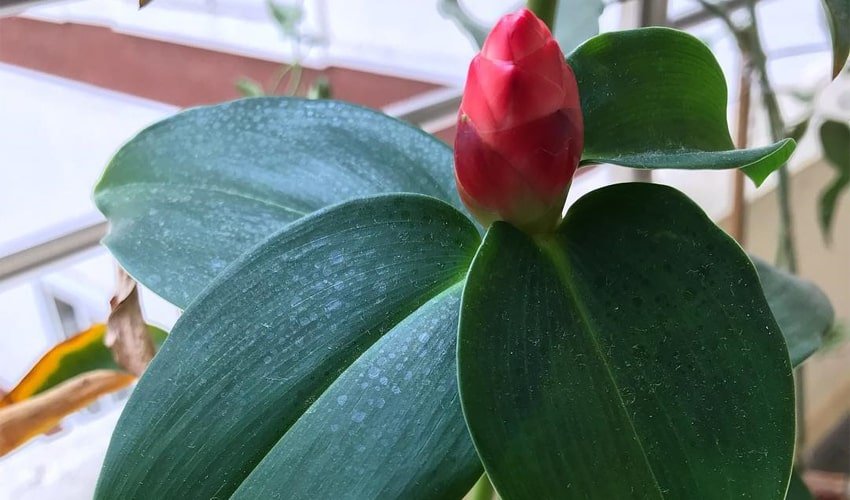 Red Ginger produces striking pink cone-like blossoms (bracts). The stems of the Ruddy ginger plant develop to a stature of almost 6 ft. (1.8 m). Its takes off are long and much more extensive than other ginger plant species.
Red Ginger produces striking pink cone-like blossoms (bracts). The stems of the Ruddy ginger plant develop to a stature of almost 6 ft. (1.8 m). Its takes off are long and much more extensive than other ginger plant species.
The blossoms of Ruddy ginger are pompous shows of ruddy or pink tufts that are within the shape of a cone. On best of these colorful bracts are elegant white ginger flowers.
Red ginger develops exterior in warm places such as the Caribbean, South Florida, and islands within the Pacific Sea. The ginger plant flourishes in the fractional sun and wet, muggy conditions.
Indian Head Ginger plant
This Ginger plant with red blossom develops up to 7 ft. (2.1 m) tall. It has expansive wide takes off that can degree 12” (30 cm) long and 4” (10 cm) wide.

When it blooms, expansive cone-shaped bracts develop from the stem that are, for the most part, a searing reddish-orange color. As with most assortments of blossoming ginger, Indian Head ginger doesn’t endure ice. Warm, sticky conditions and full sun are required for this species to blossom.
Globba Ginger plant
Globba ginger plant blossoms are clusters of little blossoms that hang down from the bracts. These blossoms of changing colors are within the shape of a snare.
 The flower-like bracts can be dazzling shows that hang down from the brief stems. The gaudy bracts can be different shades of color, from purple to white. One of the foremost well-known Globba cultivars is the Moving Woman Ginger (Globba winitii).
The flower-like bracts can be dazzling shows that hang down from the brief stems. The gaudy bracts can be different shades of color, from purple to white. One of the foremost well-known Globba cultivars is the Moving Woman Ginger (Globba winitii).
This outlandish tropical ginger plant has mauve bracts with long stems and minor tubular yellow blossoms on them.
The blossoming period of this ginger plant can final up to a month. Globba ginger blooms make great flower courses of action as they can remain new for up to 14 days after cutting.
Pineapple Ginger plant
This flower-producing ginger plant features a huge colourful pineapple-shaped bract on the conclusion of brief stems when it blooms.
When it develops in full sun, the Pineapple Ginger can develop between 6 and 8 ft. (1.8 – 2.4 m). The tropical blossoms (bracts) on this ginger assortment can reach a length of between 8” and 12” (20 – 30 cm). Although the plant looks like a reed, it has dim green takes off that wrap around the stems.
Malay Ginger plant
Malay ginger develops well in warm, muggy climates. This species of ginger develops and blossoms well in Hawaii. The stems on this ginger plant can develop up to 10 ft. (3 m) tall.
When the plant blossoms, reddish-purple bracts show up that frame a funnel-shaped shape. This gather of bracts at that point creates staggering little white blooms with a yellow swoon center.
Torch Ginger plant
 Torch ginger (Etlingera elatior) is prized for its garish blooms with expansive ruddy or pink petals. This perpetual ginger plant is additionally called the ‘Ginger flower,’ ‘Torch lily,’ ‘Wild ginger,’ or ‘Porcelain rose.’
Torch ginger (Etlingera elatior) is prized for its garish blooms with expansive ruddy or pink petals. This perpetual ginger plant is additionally called the ‘Ginger flower,’ ‘Torch lily,’ ‘Wild ginger,’ or ‘Porcelain rose.’
The blossom of this ginger plant includes a tight cluster of pink to ruddy petals that frame an egg shape within the center. From this, long lovely petals spread out to create a star.
Question related Ginger plant
- Is Ginger an annual or perennial?
-NO, It is die down in autumn. - How long does it take to grow Ginger?
-Six to Eight weeks. - Can you grow Ginger in a pot?
-YES - Do ginger plants spread?
-YES - What is the leading fertilizer for ginger plants?
-Use a nitrogen fertilizer on ginger, like a 10-20-20. As well much nitrogen will cause ginger plants to develop over the top foliage, which is able decrease rhizome yields.
Also Read Majesty plant – The Most Gorgeous and Embellishing Plant
Reference
Got some questions? Or some suggestions? That’s why we’ve got a comments section on this blog! You can feel free to leave a comment or two down below, and we’ll get back to you as soon as possible!
We love reading your messages……

